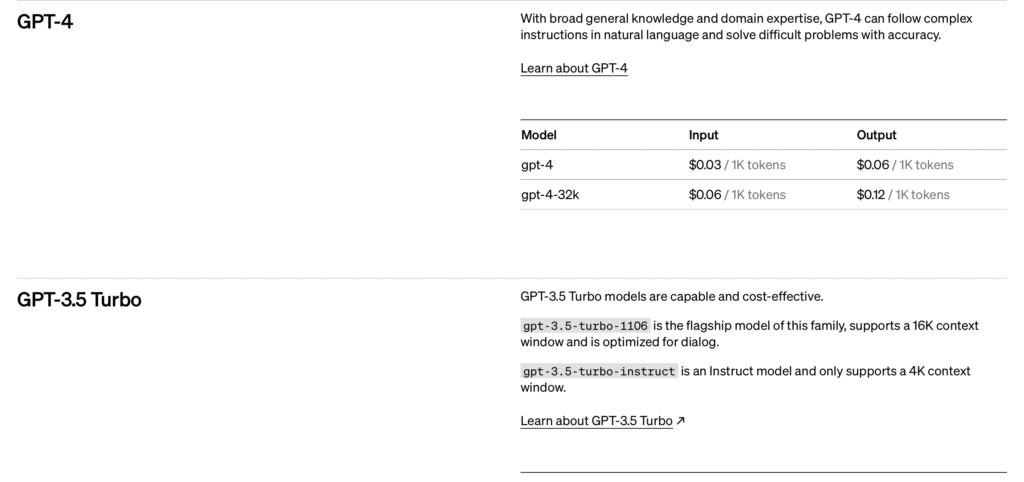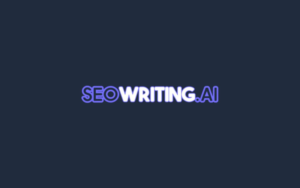Delving into the Realm of Creativity: A Comprehensive Comparison of Leonardo.ai vs DALL-E 2.0
In the ever-evolving landscape of artificial intelligence, the ability to translate text descriptions into stunning visual representations has emerged as a remarkable breakthrough. Two of the frontrunners in this domain are Leonardo.ai vs DALL-E 2.0, AI-powered tools that have captivated the imagination of creative individuals and sparked a surge of curiosity among those seeking to explore the boundless possibilities of visual expression.
Leonardo.ai: A Canvas of Innovation
Leonardo.ai stands as a testament to the transformative power of AI, empowering users to unleash their artistic visions with remarkable precision and versatility. Powered by cutting-edge machine learning algorithms, Leonardo.ai meticulously interprets text descriptions, translating them into high-resolution images that exude authenticity and originality.
Table of Contents
Unveiling the Features that Make Leonardo.ai a Visual Masterpiece
Leonardo.ai‘s arsenal of features sets it apart as a formidable tool for creative exploration:
- High-Resolution Image Generation: Leonardo.ai produces images that rival the quality of professional photography, with crisp details and captivating color palettes.
- Precise Text-to-Image Translation: Leonardo.ai’s ability to seamlessly translate text prompts into visual representations is unparalleled. Even the most intricate or abstract descriptions are accurately captured, resulting in images that resonate with the artist’s intentions.
- Creative Freedom Unleashed: Leonardo.ai grants users unparalleled creative freedom, empowering them to express their unique artistic styles and envision groundbreaking visual concepts.
Navigating the Pros and Cons of Leonardo.ai
As with any innovative technology, Leonardo.ai presents both advantages and considerations:
Pros:
- Stunning Image Quality: Leonardo.ai produces images that are both visually appealing and technically impressive.
- Accuracy and Versatility: Leonardo.ai’s ability to translate text descriptions into images is highly accurate, even for complex or abstract prompts.
- User-Friendly Interface: Leonardo.ai’s interface is intuitive and easy to navigate, making it accessible to users of varying levels of technical expertise.
Cons:
- Processing Speed: Leonardo.ai can be slow to generate images, especially for complex prompts.
- Limited Prompts: The number of prompts available in Leonardo.ai’s database is somewhat limited, potentially restricting the range of creative possibilities.
- Relatively New Tool: Leonardo.ai is still under development, and its features may continue to evolve over time.
My Personal Experience with Leonardo.ai
As a creative individual fascinated by the intersection of technology and art, I had the opportunity to explore Leonardo.ai’s capabilities firsthand. I was immediately impressed by its ability to translate my text descriptions into visually captivating images. The quality of the images was remarkable, and I was particularly impressed by Leonardo.ai’s ability to capture subtle details and nuances.
However, I also noticed that the generation process could be slow, especially for complex prompts. Additionally, the limited number of prompts somewhat restricted my creative freedom. Overall, my experience with Leonardo.ai was positive, and I am excited to see how the tool continues to develop in the future.
if you are interested in Leonardo.ai in a more detailed blog click here

Pricing and Alternative Options
Leonardo.ai offers a variety of pricing plans to suit different needs and budgets. The free plan provides limited access to the tool, while the pro and business plans offer more extensive features and higher image generation limits.
For those seeking alternatives to Leonardo.ai, several notable options exist:
- DALL-E 2.0: DALL-E 2.0 is widely considered to be the most advanced text-to-image tool available, and it is known for its ability to generate incredibly realistic and creative images. However, it is currently invite-only and has a waitlist.
- Midjourney: Midjourney is another popular text-to-image tool that is known for its ability to generate imaginative and surreal images. It is a good option for users who want to explore the boundaries of creativity.
- Artbreeder: Artbreeder is a more traditional image editing tool that has a text-to-image feature. It is a good option for users who want more control over the editing process.
What is DALL-E 2.0?
DALL-E 2.0 is a web application developed by OpenAI, a research organization focused on artificial intelligence. It is based on a machine learning model called CLIP, which has been trained on a massive dataset of images and text.
DALL-E 2.0 works by providing a text description of an image you want to create. The application then uses the CLIP model to generate an image that matches the description.
For example, if you enter the description “A dog riding a unicorn,” DALL-E 2.0 will generate an image of a dog riding a unicorn.
Pros of DALL-E 2.0:
DALL-E 2.0 offers a number of advantages over other image generation tools. First, it is able to generate realistic and detailed images. Second, it can generate images of any type, including creative and imaginative ones. Finally, it is easy to use, even for those with no programming or AI knowledge.
Cons of DALL-E 2.0:
DALL-E 2.0 also has some drawbacks. First, it is still under development, which means it can generate inaccurate or irrelevant images. Second, it is currently only available by invitation. Finally, it is expensive, with prices starting at $15 per month.

Why choose DALL-E 2.0?
DALL-E 2.0 is an excellent choice for anyone interested in creativity and technology. It is a powerful tool that can be used to generate realistic, creative, and imaginative images.
If you are looking for a way to improve your creative skills, DALL-E 2.0 is an option to consider. It can help you generate new ideas and bring your visions to life.
Furthermore, DALL-E 2.0 has the potential to be used in a variety of professional applications, including marketing, design, and education. If you work in one of these fields, DALL-E 2.0 can help you create more engaging and effective visual content.
Here are some specific examples of how DALL-E 2.0 can be used:
- Artists: DALL-E 2.0 can be used by artists to generate new ideas and create original images.
- Designers: DALL-E 2.0 can be used by designers to create mockups, concept art, and other visual materials.
- Illustrators: DALL-E 2.0 can be used by illustrators to create realistic or creative illustrations.
- Marketers: DALL-E 2.0 can be used by marketers to create visual content for their ads and marketing campaigns.
- Educators: DALL-E 2.0 can be used by educators to create visual resources for education.
Ultimately, the decision of whether to choose DALL-E 2.0 depends on your needs and goals. If you are interested in creativity and technology, DALL-E 2.0 is a tool worth considering.
Personal experience:
I had the opportunity to try DALL-E 2.0 and I was impressed by its capabilities. I generated images of various types, from realistic scenes to imaginary landscapes. I was particularly impressed by DALL-E 2.0’s ability to capture the details and nuances of the real world.
For example, I generated an image of a dog riding a unicorn. The image was realistic and detailed, and the dog and the unicorn looked perfectly at ease with each other. I also generated an image of a futuristic city, and the image was rich in detail and imagination.
Overall, I was very satisfied with my experience with DALL-E 2.0. I think it is a powerful tool that has the potential to change the way we create and consume images.
Ethical Considerations and the Future of Text-to-Image Technology
The rapid advancement of text-to-image technology raises important ethical considerations, including the potential for misuse and the implications for copyright and intellectual property. As this technology continues to evolve, it is crucial to establish guidelines and safeguards to ensure responsible and ethical use.
Conclusion: Leonardo.ai vs DALL-E 2.0
The advent of text-to-image tools like Leonardo.ai vs DALL-E 2.0 heralds a paradigm shift in the realm of creative expression. These AI-powered marvels have the potential to revolutionize not only how we perceive and interact with visual content but also how we conceptualize and materialize our artistic visions.
By bridging the gap between our imaginations and the physical world, text-to-image tools empower individuals to unleash their creative potential with unprecedented freedom and precision. No longer constrained by traditional artistic mediums, we can now conjure images from the depths of our minds, transforming abstract ideas into tangible works of art.
This new era of AI-enhanced creativity promises to democratize creative expression, making it accessible to a wider audience than ever before. Individuals with no prior artistic training can now explore their creativity and produce stunning visuals, fostering a more inclusive and diverse artistic landscape.
Furthermore, the ability to generate images from text descriptions holds immense potential for various industries, from product design and marketing to education and entertainment. Imagine architects collaborating with AI to visualize intricate architectural designs, or educators using AI-generated images to enhance learning experiences. The possibilities are truly limitless.
As we navigate this uncharted territory of AI-powered creativity, it is crucial to proceed with caution and responsibility. Ethical considerations must underpin the development and utilization of these tools to ensure that they are used for good rather than harm. We must carefully examine the potential for misuse, such as the creation of deepfakes or the spread of misinformation.
With thoughtful guidance and responsible implementation, text-to-image tools can revolutionize the way we create and experience the world around us. They have the potential to empower individuals, foster innovation, and shape the future of artistic expression.
As we venture into this exciting new era of AI-enhanced creativity, let us embrace the transformative power of technology while ensuring that it serves as a catalyst for progress and understanding, rather than division and manipulation. Together, we can harness the boundless potential of text-to-image tools to shape a future where imagination knows no bounds and creativity flourishes in all its forms.





